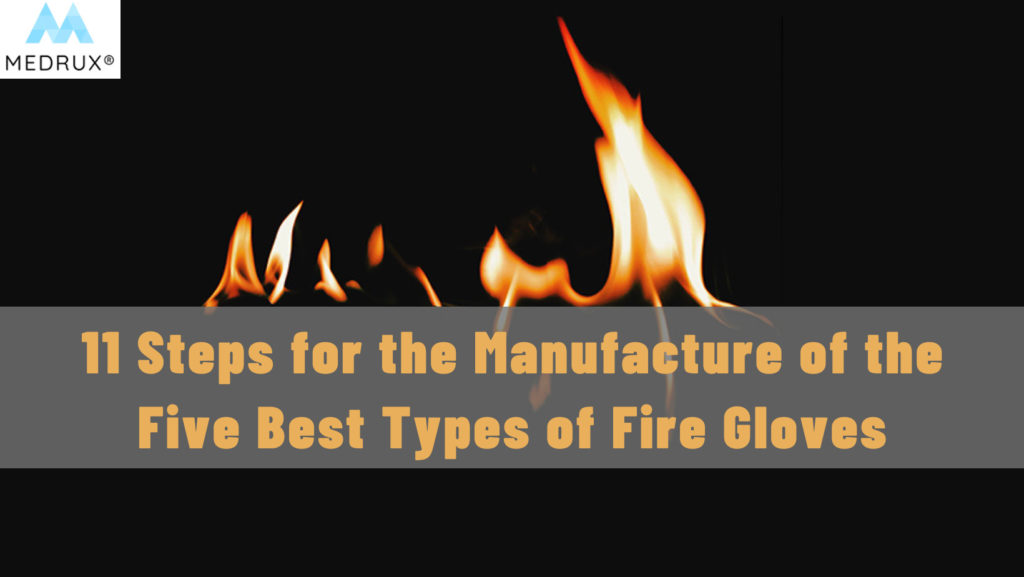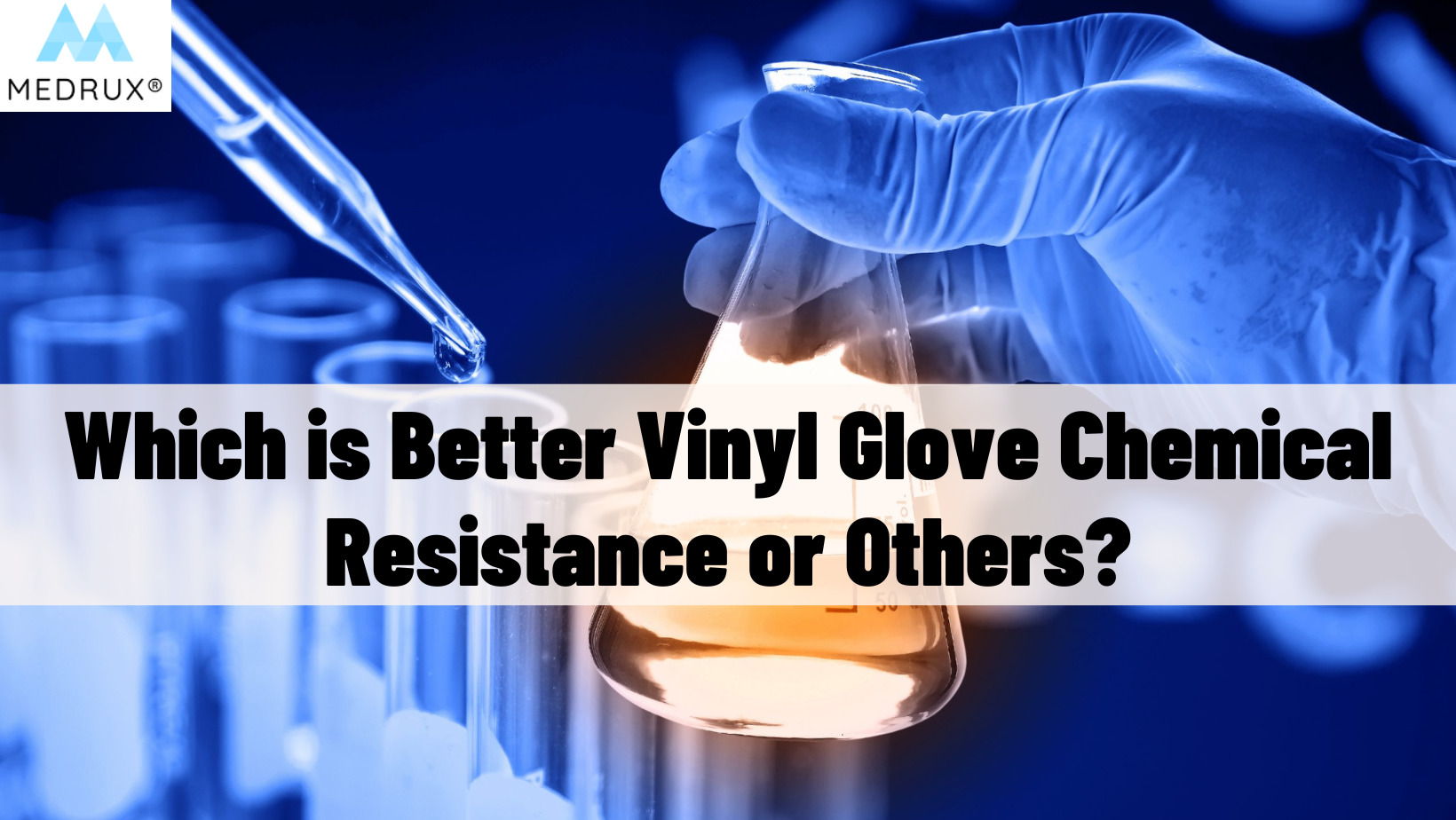Fire is one of the key elements we need to survive on this planet.
Yet, it is also one of the great dangers we face. Fire PPEs are popularly used to protect us from fire hazards. And fire gloves are one of the main PPEs used.
If you wish to know more about fire gloves, you have come to the right place!
We will offer you a comprehensive guide about fire gloves and tell you everything you need to know.
This article will explain why fire gloves are needed and who needs them. We will also discuss the materials used and how they are made. Additionally, we will tell you all about the EN 407 and NFPA 1971 standards. Then, we will reflect on the features of fire gloves.
Afterward, we will offer you a thorough guide to help you purchase your fire glove. Finally, you can determine what type of glove you want.
Why do we need fire gloves?
Fire gloves are used to combat thermal risks. Several professions expose you to the risk of high temperatures and even flames. These professions include welders, bakers, workers, and firefighters.
Thus, the use of thermal protective equipment like gloves is essential.
Fire gloves are regulated by either European or American manufacturing standards. These standards ensure some features like; burning behavior, contact heat, convective heat, radiant heat, and molten metals.
Additionally, fire gloves are made from several layers to offer maximum insulation. Therefore, these gloves offer protection in temperatures as high as 350 degrees.
Who needs fire gloves?
Fire gloves are used by those exposed to the risk of flames and high temperatures.
-
Firefighting
Firefighters face thermal threats all the time. They dive into the open fire to save innocents. Statistics reveal that 7% of firefighters are at risk of thermal burns. While 9% of volunteer firefighters are at risk of burns.
Therefore, they need to be thoroughly protected to ensure their safety.
-
Welding
Welders use high heat to melt and infuse materials together. The process of welding can lead to the splashing of hot melted metals. This can cause severe damage to the hand.
Thus, welders need to always wear PPE, including gloves.
-
Grilling
Both grilling and baking require the use of high temperatures. However, you can use either fire gloves or heat-resistant gloves when you’re cooking.
Bottomline
Fire gloves are not only used when you are exposed to flames. But can be used to protect from high temperatures as well.
What are the materials used to make fire gloves?
The materials used in making fire gloves must be durable and resistant to heat and flame. Several materials are used in the manufacturing of fire gloves. Gloves made for fire protection include:
-
Leather gloves
Leather gloves offer moderate to high protection from high temperatures and flames. They also resist abrasions and sharp objects. However, leather gloves need to be treated to withstand heat.
Therefore, they can be used by welders and firefighters. Additionally, liners are essential to protect your hand from dryness.
-
Aluminized gloves
These gloves offer protection up to 2000 degrees Fahrenheit. Therefore, aluminized gloves are designed to be heat resistant.
Consequently, these gloves can be used when working at furnaces. They are also used by welders.
-
Kevlar gloves (Aramid gloves)
Aramid gloves are flame and heat-resistant. These gloves have inter-chain bonds that strengthen them. Thus, they offer protection from cuts and abrasions as well.
However, these gloves are more expensive than other fire gloves.
-
Acrylic gloves
These gloves are durable and offer heat protection. However, they are heavier than other gloves. This may obstruct movement.
-
Aramex gloves
These gloves can be designed to be flame resistant. They can be used in environments where flames and metal sparks are hazardous. However, they might not tolerate extremely high temperatures.
Bottomline
Fire gloves need to be durable to withstand flames and high temperatures. Therefore, leather, acrylic, Aramex, and aramid provide protection. However, acrylic fire gloves can be heavy, while aramid fire gloves are expensive.
How are fire gloves manufactured?
Since fire gloves are used for a very delicate purpose, thus, their manufacturer needs to follow specific standards.
Manufacturing fire gloves either follow EN 407 or NFPA 1971 standards. These standards protect you from thermal, physical, and other environmental hazards.
-
EN 407
This European standard ensures the performance of fire gloves. The EN 407 standard has 6 numbers, each relating to a specific type of hazard. These numbers guarantee burning behavior, contact heat, convection heat, radiant heat, and splashes of molten metal.
Therefore, we will help you understand these numbers to choose the best gloves.
-
Burning behavior
This number is used to measure the flammability of the gloves. The glove’s fingers are stretched over the flame for almost 15 seconds during this test.
Then, the after-flame and afterglow times are measured. The time passed with the glove glowing, and burning is measured to determine flammability. The glove’s condition is examined to see if it cracks, melts, or drips.
Afterward, the gloves are ranked on a scale from 1 to 4, with 4 being the highest flame resistant. Therefore, higher ranks are needed for professions that deal with direct flame.
-
Contact heat
This test determines the resistance of the glove to contact heat. Throughout this test, the outer side of the glove is exposed to a hot probe. The temperature of this probe ranges from 100oC to 500oC.
Since this test measures the thermal insulation, the calorimeter used to measure the temperature is placed inside the glove. The gloves must be subjected to heat for at least 15 seconds.
Therefore, the glove’s contact heat resistance ranking is given according to the highest temperature it withstands. Thus, the higher the rank, the higher the contact heat resistance.
This test is ranked on a scale from 1 to 5.
-
Convective heat
This test also measures the thermal insulation of fire gloves. However, it uses a gas flame instead of a hot probe.
Thus, it determines the glove’s ability to handle convective heat emitted from gas flames. A calorimeter is placed inside the glove to monitor the rate of temperature rises.
Then, the glove is ranked by the time it takes for the temperature to rise by 24oC. The ranks range from 1 to 4.
-
Radiant heat
This test measures the glove’s thermal insulation like the previous two tests. Instead of using a probe or a gas flame, this test uses a radiating heat source.
Therefore, the glove is placed at a suitable distance from the heat-radiating source. Then, a calorimeter was placed inside the glove. It determines the time it takes for the heat to move through the glove and reach the inner surface.
Thus, the glove’s ability to slow heat transfer is measured on a scale from 1 to 4.
-
Splashes of molten metal
These splashes can either be small or large. However, they are both tested in the same way.
The molten metal is dropped on the glove in small or large drops during this test. Then, the temperature inside the glove is measured to determine how many drops can raise the temperature.
Finally, the gloves are ranked based on the number of drops they can withstand. The fire gloves are then ranked from 1 to 4.
Bottomline
EN 407 is a European standard for manufacturing fire gloves. These standard measures the following:
- Burning behavior is used to determine the fire glove’s flammability.
- Contact heat, convective heat, and radiant heat. These three tests are used to determine thermal insulation and heat transfer.
- Splashes of molten metal which is used to determine the contact time with molten metal drops.
-
NFPA 1971
These standards are set to ensure the safety of firefighters against heat, flames, and water. Understanding the NFPA standards will ease the process of selecting the right gloves.
-
Thermal protective performance
This test is used to measure thermal insulation. The glove’s material is subjected to convective heat and radiant heat to determine the material’s strength.
The thermal protective performance value should be at least 35.
-
Shrinkage resistance test
The shrinkage test measures the resistance of the glove’s material and its lining to heat.
In the case of the outer material of the glove, the material shouldn’t:
- Melt
- Ignite
- Crack
- Shrink more than 8%
In the case of the lining, the material shouldn’t separate or ignite.
-
Conductive heat resistance
The test measures the fire glove’s ability to resist conductive heat. This measures the time the heat takes to reach the inner surface of the glove. This time should not be less than 10 seconds.
-
Flame resistance test
This is the measure of the fire glove’s ability to resist flames.
According to the NFPA standards, the after-flame time shouldn’t be more than 2 seconds. Additionally, the material should resist melting and dripping for as long as possible.
Other tests
The NFPA standards include more tests than EN 407. Aside from the previously mentioned tests, it also includes:
- Thread melting test
- Liquid penetration resistance test
- Puncture and cut resistance tests
- Liner retention test
- Overall liquid integrity test
- Glove donning test
Bottomline
The NFPA 1971 ensures the fire glove’s resistance to conductive heat, radiant heat, and flames. Additionally, it ensures extra thermal protection, especially for the back of the glove.
What are the features of fire gloves?
Fire gloves should offer thermal and heat protection. Additionally, they should provide physical resistance.
-
Physical resistance
The physical features of fire gloves either follow NFPA or EN 388 standards. Physical resistance to cuts and abrasions is essential when dealing with fires.
Physical resistance includes:
-
Resistance to abrasions
Fire gloves need to combat abrasions as firefighters face rough materials and conditions. This test is measured on a scale that ranges from 1 to 4.
-
cut resistant
This test measures the fire glove’s ability to handle sharp objects. The glove’s external material is tested on a scale from 1 to 5.
-
Resistance to tears
This test is measured on a scale from 1 to 4. It is used to determine the force fire gloves can handle without tearing.
- Puncture resistant
This test measures the glove’s material to sharp objects like needles.
Bottomline
Resistance to cuts, abrasions, punctures, and tears is essential in manufacturing fire gloves.
-
Heat resistance
Fire gloves should be able to combat high temperatures. Other than the NFPA standards, there are two European standards used. EN 366 and EN 367 are used to ensure the glove’s quality.
A calorimeter is placed inside the fire glove to measure the temperature. There are 3 temperatures measured by this test:
- The low temperature resembles that in the industrial factories
- The medium temperature is similar to the temperature firefighters face
- The high temperature that reaches 80 KW/m2
Bottomline
Heat resistance is also essential for protecting workers, welders, and firefighters. Thus, fire gloves need to follow EN 366 and EN 367 standards.
How to buy fire gloves?
Whether you are purchasing fire gloves for firefighters, welders, or workers, you should thoroughly consider the options. You might think that overalls, garments, and boots are of more importance.
However, hand injuries still constitute a threat. Therefore, quality fire gloves are a requirement.
Thus, the following factors should be considered when purchasing fire gloves.
-
Selecting the glove’s material
The gloves layers should be constructed using materials that don’t affect grip and dexterity.
The outer layer
The shell of fire gloves is usually made of leather. It provides good puncture resistance. Additionally, it is always tanned to guarantee it’s flame resistant.
Furthermore, different types of leather can be used. For instance, there is cowhide, elk, pigskin, and goat leather. However, thinner leathers can provide a better range of motion. Yet, this can reduce thermal insulation.
On the other hand, Kevlar gloves, for example, are becoming more popular these days. But they need further treatment to ensure they are puncture-resistant.
The middle layer (the barrier)
The barrier layer guarantees that heat won’t reach the inner surface of the glove. Therefore, the barrier layer must remain intact with frequent and multiple uses.
Thus, it is manufactured using polytetrafluoroethylene (PTFE) or polyurethane. These materials can withstand heat and won’t degrade by high temperatures.
However, these materials don’t stretch and are not as flexible as regular glove materials. Therefore, they are manufactured oversized to facilitate donning and doffing. They are installed permanently within the glove.
Thus, they can create a sense of bulkiness in the fire gloves.
The inner layer (the lining)
The lining of the fire glove is the layer that provides comfort to the user. However, its key function is to increase the protection offered by fire gloves.
Bottomline
Fire gloves are made from three or more layers. This ensures they provide the optimum protection from flames and heat. The outer layer is usually made using leather, as it can be tanned to ensure its flame resistance. However, the use of textile materials is on the rise.
Additionally, the barrier and the lining are added to the glove to offer more protection. Although, they can affect the fire glove’s flexibility.
The thickness of the glove’s lining
The thicker the glove’s lining, the bulkier the glove. Therefore, the thickness of the lining should follow the requirements set by NFPA 1971.
However, the shell material plays a critical role in choosing the lining. If the glove’s shell can withstand flame and high temperatures, the glove can be made of two layers. Thus, reducing the bulkiness and improving dexterity.
Additionally, the lining layer can be manufactured in a three-dimensional shape to improve flexibility. A flame-resistant modacrylic material provides the wearer with comfort and protection.
Furthermore, Kevlar can be used to make fire glove linings as it resists flame and heat.
On the other hand, polyesters and nylons are considered dangerous in this context. They are soft and comfortable but quickly melt and are suitable heat transmitters.
Bottomline
The lining of the fire glove is better manufactured using a textile material like flame-resistant modacrylic. It should be made into a three-dimensional shape to improve the glove’s range of motion.
-
Design considerations
The fire glove’s design is as critical as the choice of the glove’s material. A misplaced seam can lead to misfits or even reduce the hand’s function.
Therefore, it’s essential to consider the design you need to maximize dexterity.
For instance, a significant obstacle in manufacturing fire gloves is keeping the lining layer intact. Mostly, adhesives are used at the fingertips to ensure the lining is secure in place.
Consequently, this can reduce sensation and tactility. This creates a problem for firefighters when they try to use their equipment for communication.
However, three-dimensional gloves can help reduce this problem.
Bottomline
The glove’s design is crucial in preserving flexibility, dexterity, and tactility. Therefore, three-dimensional fire gloves are recommended.
-
Wristlet vs. gauntlet
Firefighters usually prefer gauntlets over wristlets. They are not tight at the wrists as wristlets; firefighters have their coat sleeves to do that trick.
Thus, gauntlets offer them more comfortable with the same level of protection. As the entire gauntlet is three layered. However, it is preferred that the gauntlet is a bit fitting at the wrist.
-
The glove’s size
Since the fire glove’s material doesn’t stretch, its size must be accurate. A well-fitted glove offers better tactility and dexterity.
The air trapped inside the fire glove also acts as a heat insulator. Therefore, proper sizing is essential.
To determine your fire glove size, you can follow these steps:
- First, measure the length of the index finger. Do this from the tip of the finger to its base.
- Second, measure the width of your hand across the knuckles on the back of the hand.
- Third, use the size chart offered by the manufacturer to determine your size.
Bottomline
To purchase fire gloves, you need to consider the glove’s material, design, thickness, length, and size.
-
Dexterity vs. thermal insulation
When choosing a fire glove, you might ask yourself what is more important dexterity or thermal performance?
Let’s take a closer look at the problem.
Dexterity
Fire gloves should give firefighters a good hand grip and tactile sensitivity at the fingertips.
Thermal insulation
Fire gloves should provide firefighters with enough protection to hold hot objects and toss them away. They also need to protect the firefighters’ backhands from the heat of burning objects.
The verdict
Unfortunately, fire gloves are not the easiest to don and doff and don’t offer 100% thermal insulation.
Yet, studies proved firefighters care more about their ability to move and manipulate objects. Therefore, they choose dexterity over thermal insulation.
However, if heat is transmitted through the fire glove, then firefighters won’t be able to perform their job. Therefore, NFPA 1971 and EN standards ensure that firefighters have the best of both worlds.
Thus, constant efforts are being made to increase dexterity and thermal insulation.
Final thoughts
Fire gloves are an essential PPE used in many professions. They are the go-to choice for some workers, welders, and firefighters.
Thus, they are manufactured according to specific standards to ensure they fulfill their role. Their manufacturing can follow the NFPA 1971 American or EN 407 European standards.
Accordingly, fire gloves offer physical, thermal, and flame-resistant properties that ensure your safety.
Thus, if you are looking to purchase your fire glove, then you are now ready to make your choice.
Hajar Nagdy is a microbiologist and a lecturer. Nagdy holds a Bachelor’s degree in the fields of microbiology and environmental sciences, and she is now a M.Sc. candidate in microbiology. In her free time, she can be found listening to classical music, reading interesting scientific articles, running a charity, or traveling across Europe.








